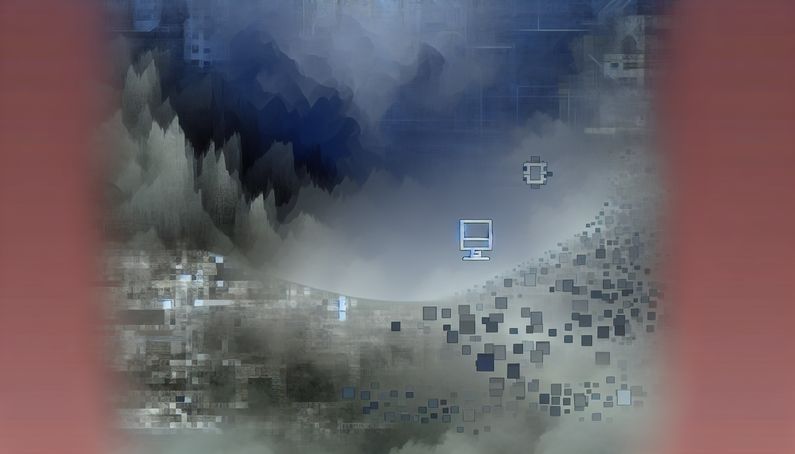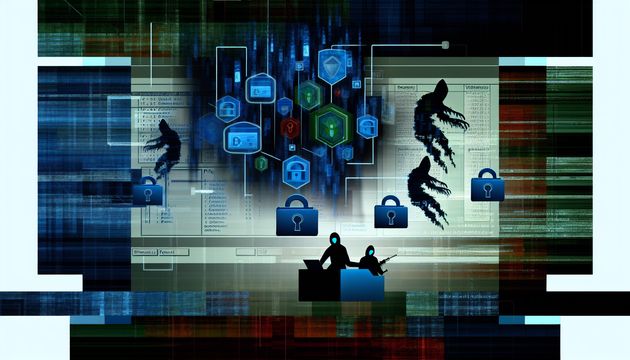
Fog Ransomware: A New Threat with a Familiar Face
The Fog ransomware attack stands out in the cybersecurity landscape due to its unusual blend of legitimate and open-source tools. This approach complicates detection and prevention efforts, as attackers repurpose tools like Syteca, a legitimate employee monitoring software, for malicious purposes such as espionage and credential harvesting (Bleeping Computer). Additionally, the use of Stowaway, an open-source proxy tool, allows attackers to stealthily deliver malware, bypassing traditional defenses (Bleeping Computer). This strategic use of tools underscores a broader trend where cybercriminals leverage legitimate software to blend in with normal network activities, making it challenging for cybersecurity teams to identify threats. The Fog ransomware group exemplifies this trend, employing a mix of tools to maximize their impact while evading detection.
Unconventional Toolset in Fog Ransomware Attacks
Syteca: A Legitimate Tool for Malicious Intent
In the context of the Fog ransomware attacks, one of the most unusual tools employed by the attackers is Syteca, formerly known as Ekran. Syteca is a legitimate employee monitoring software designed to record screen activity and keystrokes. Its legitimate purpose is to help organizations monitor employee activities for compliance and productivity purposes. However, in the hands of cybercriminals, Syteca becomes a powerful tool for espionage and credential harvesting. The attackers use Syteca to capture sensitive information such as account credentials, which are crucial for further infiltration into the victim’s network. The deployment of Syteca in these attacks highlights the growing trend of using legitimate software for malicious purposes, making detection and prevention more challenging for cybersecurity teams. (Bleeping Computer)
Stowaway: Covert Communication and File Transfers
Stowaway is another tool that plays a pivotal role in the Fog ransomware attack strategy. It is an open-source proxy tool designed for covert communication and file transfers. In the context of these attacks, Stowaway is used to stealthily deliver Syteca to the target systems. This tool allows attackers to bypass traditional network defenses by creating encrypted tunnels for data exfiltration and command-and-control communications, which is like a secret passageway for data. The use of Stowaway exemplifies how open-source tools can be repurposed for malicious activities, offering attackers a low-cost and easily customizable solution for maintaining stealth and persistence within compromised networks. (Bleeping Computer)
SMBExec: Facilitating Lateral Movement
SMBExec is a tool within the Impacket open-source framework, used by the attackers for lateral movement across the victim’s network. Think of lateral movement as a way for attackers to move sideways within a network, like a burglar sneaking from room to room in a house. It functions similarly to Microsoft’s PsExec, allowing for the execution of processes on remote systems. In the Fog ransomware attacks, SMBExec is employed to deploy ransomware payloads and other malicious tools across multiple systems within the network. This capability is crucial for the attackers to maximize the impact of the ransomware by encrypting as many systems as possible. The use of SMBExec underscores the attackers’ proficiency in leveraging open-source tools to achieve their objectives while minimizing the risk of detection. (Bleeping Computer)
GC2 Tool: A New Addition to the Ransomware Arsenal
The GC2 tool is another component of the unconventional toolset used in the Fog ransomware attacks. While specific details about its functionality are limited, it is noted as an atypical tool for ransomware operations. The inclusion of GC2 in the attack toolkit suggests that the Fog ransomware group is experimenting with new tools to enhance their capabilities and evade detection. This approach reflects a broader trend in the cybersecurity landscape, where attackers continuously adapt and innovate to stay ahead of defensive measures. The introduction of new tools like GC2 highlights the need for organizations to remain vigilant and proactive in updating their security strategies. (Bleeping Computer)
Adap2x C2 Agent Beacon: Unusual Command and Control
The Adap2x C2 Agent Beacon is another tool that stands out in the Fog ransomware attacks. It serves as a command-and-control (C2) agent, facilitating communication between the attackers and their malware deployed within the victim’s network. The use of Adap2x is notable because it is not commonly associated with ransomware operations, indicating the attackers’ willingness to explore unconventional methods to achieve their goals. By using lesser-known C2 tools, the Fog ransomware group can potentially evade detection by security solutions that rely on signature-based detection methods. This strategy underscores the importance of employing advanced threat detection techniques that can identify anomalous behavior indicative of a ransomware attack. (Bleeping Computer)
Living-off-the-Land: Leveraging Legitimate Processes
The Fog ransomware group frequently employs a tactic known as “living-off-the-land,” which involves using legitimate system tools to carry out malicious activities. This approach allows attackers to blend in with normal network traffic and avoid raising suspicion. Tools such as PowerShell and Windows Management Instrumentation (WMI) are commonly used for tasks like executing scripts, gathering system information, and deploying malware. By leveraging these legitimate processes, the attackers can effectively masquerade as authorized users, making it difficult for traditional security tools to differentiate between benign and malicious activities. This tactic is a testament to the attackers’ sophistication and their ability to exploit the inherent trust in legitimate software. (CrowdStrike)
Data Exfiltration and Ransom Negotiations
In addition to deploying ransomware, the Fog ransomware group engages in data exfiltration to increase their leverage over victims. Tools like MEGAsync and Filezilla are used to transfer stolen data to external servers controlled by the attackers. This data is then used as a bargaining chip during ransom negotiations, with the threat of public disclosure if the ransom is not paid. The group’s ransom demands are typically specified in cryptocurrency, such as Bitcoin or Monero, and are accompanied by a deadline for payment. Victims are directed to a TOR-based Data Leak Site (DLS) where the attackers may publish samples of the stolen data to demonstrate their seriousness. This dual-pronged extortion model increases the pressure on victims to comply with the attackers’ demands. (Logisoft)
Evolving Threat Landscape: The Rise of New Ransomware Groups
The emergence of the Fog ransomware group is indicative of the evolving threat landscape, where new ransomware groups are continually emerging and refining their tactics. While Fog may not yet have the name recognition of established groups like LockBit or BlackBasta, it is gaining visibility by leveraging tools, tactics, and infrastructure from now-defunct or splintered groups. This approach allows Fog to strike hard while flying under the radar, taking advantage of the chaos and disruption in the ransomware space. As ransomware attacks continue to rise, organizations must remain vigilant and adapt their security strategies to address the evolving threat posed by emerging groups like Fog. (STORM Guidance)
Conclusion
The unconventional toolset employed by the Fog ransomware group highlights the dynamic nature of the cybersecurity threat landscape. By leveraging a mix of legitimate and open-source tools, the attackers can effectively evade detection and maximize their impact. Organizations must remain proactive in their security efforts, employing advanced threat detection techniques and staying informed about the latest tactics used by ransomware groups. As the threat continues to evolve, collaboration and information sharing among cybersecurity professionals will be crucial in mitigating the impact of ransomware attacks and protecting critical assets.
Final Thoughts
The Fog ransomware group’s innovative use of both legitimate and open-source tools highlights the evolving nature of cyber threats. By employing tools like SMBExec for lateral movement and Adap2x C2 Agent Beacon for command and control, the attackers demonstrate a sophisticated understanding of how to exploit existing technologies for malicious purposes (Bleeping Computer). This approach not only increases the effectiveness of their attacks but also challenges traditional security measures. As the threat landscape continues to evolve, organizations must adopt advanced threat detection techniques and remain vigilant against emerging ransomware groups like Fog. Collaboration and information sharing among cybersecurity professionals will be crucial in mitigating these threats and protecting critical assets.
References
- Bleeping Computer. (2024). Fog ransomware attack uses unusual mix of legitimate and open-source tools. https://www.bleepingcomputer.com/news/security/fog-ransomware-attack-uses-unusual-mix-of-legitimate-and-open-source-tools/
- CrowdStrike. (2024). Fog ransomware. https://www.crowdstrike.com/en-us/cybersecurity-101/ransomware/fog-ransomware/
- Logisoft. (2024). Fog ransomware: The full breakdown. https://www.logisoft.com/post/fog-ransomware-the-full-breakdown
- STORM Guidance. (2024). Fog ransomware: An emerging threat built on repurposed tools and pressure tactics. https://www.cyber.care/insight/fog-ransomware-an-emerging-threat-built-on-repurposed-tools-and-pressure-tactics



